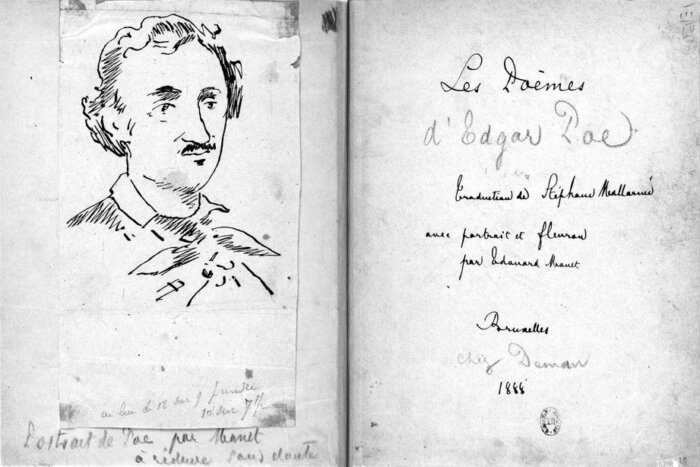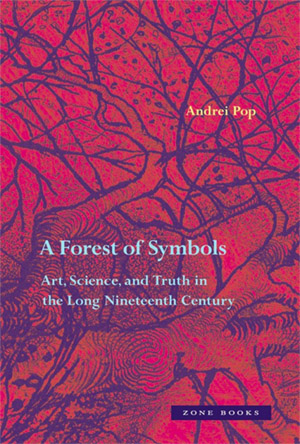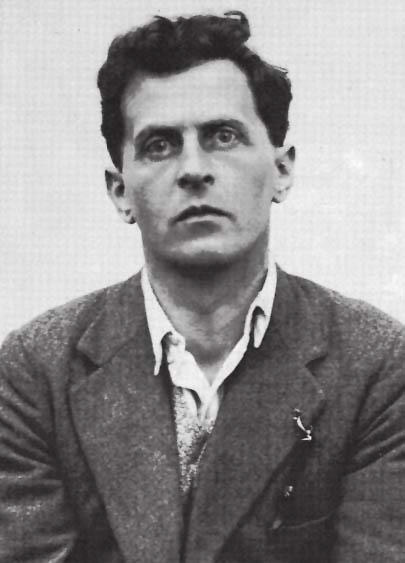A Forest of Symbols: In Conversation With Andrei Pop

“I always had a soft spot for artists and writers labeled symbolists,” Andrei Pop tells us, “if only because they were often picked on.” Indeed, he explains, they were unjustly labeled incomprehensible neurotics or egoists, anarchists or decadents — the latter even becoming a popular name for the movement. For Pop, an associate professor of art history at the University of Chicago and a member of its Committee on Social Thought, symbolist practices are crucial to understanding the genesis of modern art. Now an intellectual assumption across many disciplines, symbolism, Pop affirms in his new book “A Forest of Symbols,” was a consequence of the radical rethinking of the nature of the symbol in the late 19th century. His book provides a rich and unprecedented examination of this historical period, and a unique framework for rethinking the emergence of non-referential models of perception and for understanding the modernization of how various forms of knowledge can be represented.

Like many of the titles we at Zone Books are proud to have published in recent years — Christopher Heuer’s “Into the White,” Mitchell Merback’s “Perfection’s Therapy,” and Amy Powell’s “Depositions,” among them — Pop’s vibrant book is driven by crucial questions internal to art history but which, in their realization, are fundamentally transdisciplinary in extraordinarily creative ways. This creativity is well-reflected in the far-reaching interview featured below, in which Pop discusses, among other topics, what drew him to symbolism, the potential symbols have to communicate a common visual language, and the outsized influence of Edgar Allan Poe.
Zone Books: “A forest” seems a fittingly symbolic choice for the title. How did you decide upon it?
Andrei Pop: Credit goes to the great French poet Baudelaire, who wrote that “Man passes through forests of symbols which watch him with familiar gazes.” This reminds me of a jungle with stone idols glaring through the foliage, mysterious but also a bit silly — like a Tintin comic. But a forest is so much more: not just a thing or place but a world for plants and animals and people, who use it for food, shelter, resources — in other words, they coexist uneasily within it. And everything the humans do, practical or theoretical, they represent in pictures or words or other symbols: so symbols are our forest, and we even overlay nonhuman nature, whether forest or outer space, with symbols to bring it closer to us (the Moon, the Sun, the Milky Way). A Forest of Symbols then is a symbol full of symbols: the very theme of the book. But the title didn’t come easy! I only picked it after being struck by all the forest symbolism I used in the book, like the common phrase of ‘not seeing the forest for the trees’. Finally, there is a small but significant difference between Baudelaire’s phrase and mine: his forests are many, mine just one, “a forest” linking art and science as symbol-making activities.
ZB: What drew you to questions of symbolism?
AP: I always had a soft spot for artists and writers labeled symbolists, if only because they were often picked on. They were supposedly overblown or overwrought or incomprehensible, they ignored nature, dabbled in the dark arts or art for art’s sake, were neurotics or egoists or anarchists or decadents — the last was even a popular name for the whole movement. Yet what these criticisms missed is the humor and the intelligence of this art, which often turned its razor wit against itself and its makers: the artist’s futile attempts to represent the world for other human beings. Then I was struck by what seemed a pure linguistic coincidence: the fact that mathematicians of the era spoke of “symbolism” too, e.g., the mathematician-philosopher Whitehead even wrote a book with this title. They did not mean art, but just the technical notations they used to express logical proofs. It turned out, on closer investigations, that these two apparently opposite practices both involved getting unreliable, subjective, self-centered human minds to pay attention to subtle nuances of drawn or printed or otherwise inscribed figures, for the purposes of coming to understand each other and recognize objective truths they could share. I was hooked.
Symbolists were supposedly overblown or overwrought or incomprehensible, they ignored nature, dabbled in the dark arts or art for art’s sake, were neurotics or egoists or anarchists or decadents.
ZB: Several artists, writers, philosophers, and mathematicians appear throughout your discussion: including Edgar Allan Poe, Stéphane Mallarmé, and Ludwig Wittgenstein. How did you choose which figures to discuss?
AP: I wish I could say it took great originality to collect these people, but the artists, whether poets or painters, just couldn’t shut up about Poe. And they were right! Just like Bart Simpson and a lot of general readers, I’ve always loved Poe, but did not realize what a systematic thinker he is. He explained with great philosophical clarity just how he intended to get the personal, incalculable effects his stories and poems like “The Raven” have on us. This theoretical bottom to Poe, but also to his translator Mallarmé and his friend the painter Manet, made them akin to my mind to the great turn-of-the-century philosophers Frege and Wittgenstein, who wrestled with how limited animal minds with a rough and ready language can know eternal truths of logic and mathematics. These thinkers in turn were friends in real life and connected in the history of philosophy. My one originality, which I think justified, has been to bring them together: Poe and Frege, Wittgenstein and Mallarmé. It is their shared ideas and the common difficulties they wrestled with, such as the possibility (or impossibility) of a private language, that to my mind justifies the combination. It might also allow us, having the benefit of their insights, to see farther than these geniuses.
ZB: How did you find and curate the illustrations for the book?
AP: Some of them have been with me since student days — especially the Manet lithographs of Poe’s Raven, which I stumbled across in the Fogg Museum print study room while studying for grad exams at Harvard: a scary rite of passage where you could be shown any object in the enormous collection without being told what it is. The Manets didn’t come up, but a seed of curiosity was planted. Another work, Van Gogh’s otherworldly green portrait of his mother, painted from a black and white photograph by the homesick son, is one of the first artworks I discovered on starting high school in Southern California in the 1990s. Others, like Seurat’s Grande Jatte and the chest, painted and carved by Gauguin, I’ve seen repeatedly over the last few years at the Art Institute of Chicago. Many I found in books, and are only to be found there, being book illustrations. One particular drawing was known to scholars over the last quarter-century only in reproduction. I finally tracked down the original just as the book was being printed this summer 2019. So it is quite a cast of characters, from familiar friends to chance acquaintances. They belonged in the book if I could explain what drew me to them, and what made them speak to each other. I have also given each a little commentary on the page where they are reproduced, in addition to the main text. They deserve the second look!
ZB: At one point, you outline that there are aesthetic, scientific, political, and other signs. What are the other kinds of signs might one encounter?
AP: There may not be “countless uses of language” as Wittgenstein thought, but indefinitely many sign systems: as many as activities requiring coordination. Every sport has its gestures and slogans, there are lovers’ hearts carved into trees, rituals and regalia for every priesthood and profession. A whaler and a thief have their own patois, and possibly worldview: modern stories like Moby Dick show us that. Music is fascinating because its signs are often implicit. Key signatures can convey mood, like the bleak D minor heralding Mozart’s stone guest, who drags Don Giovanni to hell. I have always wondered: are keys really signs to “be read” correctly, or just sound patterns to which people respond freely? One may ask the same about animal calls: stomping tails to indicate danger may be a sign, but what about pheromones that animals and even plants release unwittingly? The American logician Peirce, who makes a cameo in my book, was fascinated by natural signs, like smoke for fire. (He was doubtless acquainted with Native American communication systems). In the book I focus on symbols, which are signs intended to be recognized as intentionally made to be such. I’ll end with an odd one: martial arts. I practiced judo a lifetime ago, and knew the names for the grabbing at each other’s kimonos and trying to trip each other up that we did. These were ordinary Japanese words, but our fumbling moves were themselves signs of the elegant modes of flooring the opponent to whose ideal beauty we aspired in vain.
Every sport has its gestures and slogans, there are lovers’ hearts carved into trees, rituals and regalia for every priesthood and profession.
ZB: It seems that symbols have the potential to communicate a common visual language, but also to be overlooked, or misunderstood. How do you see the artists of the 19th century grappling with that issue?
AP: Enlightenment thinkers, confronted with classical Chinese and ancient Egyptian writing, thought pictures could be a new universal language, imparting wisdom impossible to misinterpret. Alas, two centuries of false starts with hieroglyphs taught them, by the end of the 19th century, that pictorial language, being immediate and intuitive, can give rise to the wildest misunderstanding. That has its bright side too: one doesn’t misunderstand prosaic interactions like paying for groceries. It is with singular, puzzling, dark or dazzling things or happenings that we have a hard time saying what they are. In my book I quote some classic vitriol, such as the painter-poet Dante Gabriel Rossetti, a visionary artist in his own right, exclaiming that Manet’s Raven illustrations are only fit for insane asylums. The old art critics were interested in such outbursts because they showed what prejudices modern innovators had to overcome. The Marxist critics on the other hand think they stem from class tensions. Both might be right: but there are more immediate causes of misunderstanding, from the state of one’s own body to the education one brings to the artwork. The artists in my book were used to being called incomprehensible: they did not despair, but patiently asked that viewers look closer, and think longer. It’s good advice for us too, as distractions and the demands on our time have multiplied.
The artists in my book were used to being called incomprehensible: they did not despair, but patiently asked that viewers look closer, and think longer. It’s good advice for us too, as distractions and the demands on our time have multiplied.
ZB: Going further, you discuss the slippage between private and public meaning. Is there something that viewers of art can do to recognize public meaning more often?
AP: The 20th century, from Wittgenstein to various technocratic states, was haunted by the idea that all meaning is public and so all our thinking ought to be as well. In art, this amounts to going into the gallery and doing long division out loud: the only reason we’d speak is to show off our facility doing something trivial. This has been the ideal of some old academic art institutions, but fortunately art is too unpredictable to achieve it. The opposite extreme, a purely interior world of unutterable feelings, is unfortunately closer to the cliché of museum as temple: silent people looking pained, furrowing their brow at artworks, grunting now and then. Much better, both for personal enjoyment and for any kind of political, moral, or scientific insight, is a balance between the experiences we have as individuals and shared content — the plot of a story, the sitter of a portrait, the mode of representation or the use of material, which points to historical context. The private too can be given its due, without being remorselessly made public: a parent’s pain for a deceased child, or the artist’s commitment to a cause, which thankfully we need not share to appreciate. One might say with Freud that “I (the ego) will be where It (the unconscious) was”, that is, become self-aware. But I prefer to think we can make articulate in dialogue what we both see as well as the marvelous fact that we do not both see everything one of us sees.

ZB: You write that “the logical content of pictures is richer than generally supposed.” How can one learn to identify the logical content?
AP: “Logical” here doesn’t mean syllogisms or standard notation out of a first-year college course. By those standards, pictures are judged logically boneless, flabby, formless; but so is much language. Take the simple utterance “See Spot run”. Nothing follows from it syllogistically. Yet there is logical content: the scaffolding on which its meaning is built. The request or command to the hearer to perceive something, the claim that what will be seen is an action of the subject Spot, perhaps even the suggestion, built on Anglophone traditions, that Spot is a dog. Here we see how the logical blends into the factual, but there are facts about the world that are not logical: whether there is a Spot, who or what that is, and so on. Likewise, in pictures, such matters as the causal means of their making (mechanical, optical, by hand?), whether they belong to the past or to timeless imagination, whether they represent sentient beings, and those beings are meant to be doing or thinking something, or showing awareness of the presence of spectators: all this belongs to the scaffolding of meaning, which historical detail fills out. There is no algorithm for figuring out what is logically implied in an image and what we need to know about the world to grasp it; it is a mutually informing process. The payoff to perceiving what is there logically is that we are more likely to look in the right place for the facts that bring the picture to momentary life.
ZB: Do symbols help people to see an artwork in the way that the artist intended it?
AP: Writing this book, I grew fascinated and finally impatient with all the catchy terms for what is really the same thing: sign, emblem, allegory, Leitmotiv, Ur-form, Gestalt, schema, and of course symbol and all its variations. What is important about symbolist art — and science, which is not usually called symbolist, but should be — is that it regards symbols as purposely devised to function as such. An artificial, that is a human-made object, be it paint or sound or ink on paper, stands for some reality, abstract and conceptual like Number or Truth or concrete and dusty like a bone or a tree. The point of the symbol is to not confuse it with the thing symbolized. Even if you take a tree to symbolize another, say a bonsai for a mighty oak, you do not conflate the two. The artwork describes reality at a distance, and it is good to know the distance. This is already a step along the road to understanding art rightly, that is self-reflectively and intelligently. Whether it is also what the artist intended depends on the artist — was the artist careful and reflective? It is possible to notice something in an artwork that the artist totally missed. But the greatest artists invest their work richly with meaning, whether they are aware of it or not. So knowing the art helps up enormously to know the people. It is the closest we will ever get to reading the minds of those long gone.
ZB: You write that “Color is, as much as pain, a paradigm case of the private.” Yet, today, marketing and psychological studies try to find common, if not objective, effects of color. Is color still private? Would one’s experience of color and its symbolism have been more private in the 19th century?
AP: Advertising wouldn’t earn its keep if it didn’t explore our hopes and fears — as do doctors for nobler purposes. I would say pain is analogous: it is colonized today by states seeking ways to torture without hurting the body (waterboarding?) and pharmaceutical companies peddling opiates, but also to cure, and if not, to understand the experience of those living in pain. These developments start in the symbolist 19th century, prior to which little was known about how the eye processes light, not to mention the liquor-and-a-board-to-bite-on approach to anesthesia. So it certainly seems as if the lonely part of our minds is shrinking. But: to this we must always add, “approximately.” An adman or dietician might know that this or that hue will make you hungry or kill your appetite: they still don’t see what you see when you have that measurable public reaction. In science fiction, authors imagine telepathy or ‘feely’-machines. The hero of William Gibson’s Neuromancer feels the excruciating pain of the heroine when she breaks her leg. Frege foresaw this scenario a century ago and replied: is it the same pain, or a different one beamed now into a second person? He thought there could be no right answer, unless we were both people at once. So there will always be metaphysically private experiences, no matter how intrusive Big Brother becomes. The challenge is how to make them count: like aesthetes circa 1900, many of us want transformative experiences that also matter to the world we inhabit.
ZB: Can you say what you’re working on next?
AP: I think it might already be obvious from the last answer: science fiction! Like symbolism, it explores the farthest imaginable reaches of human — and not just human — experience, but it does so often in a naïve, breakneck fashion that is a lot of fun after the subtleties of Manet or Frege. And if symbolism is inseparable from my experience of growing up intellectually, science fiction has been with me even longer: as long as I could read or write, and certainly before I spoke the American English that even the most exotic Hollywood aliens favor. It stayed with me too. Today literary scholars look to this genre for answers, or at least questions about our uncertain future: climate change, human migration to the stars, a world of radical genetic and computer science. That is important, but for me it is also exciting to attend to earthy and disposable materials like pulp paperbacks and magazines, lurid space films from the dawn of cinema and today’s slick video games, so different from the fastidious elegance of symbolism. Although there is symbolist science fiction too: not for nothing was Poe a pioneer of the genre. His revived Mummy observes that they had Progress in its time too, but it never progressed. I find what is absurd and funny as important as what is sad and portentous, and only together do they capture our experience of that part of reality that does not yet exist — the Future.
Zone Books is an independent nonprofit publishing house founded in 1985. Zone Books are edited by Jonathan Crary, Michel Feher, Hal Foster, and Ramona Naddaff, and designed by Bruce Mau and Julie Fry. They are distributed by the MIT Press.



